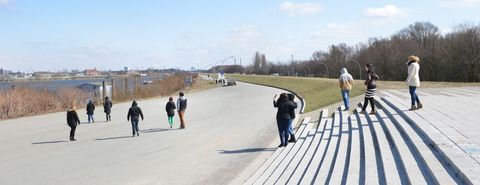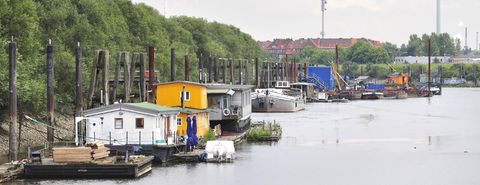SIMILAR PROJECTS
Cities and Climate Change
 Hill of new horizons
Hill of new horizons
Energy Hill Georgswerder
to the projectCities and Climate Change
 The metropolis moves onto water
The metropolis moves onto water
IBA DOCK
to the project
Recreation in the Harbour
According to planning law, Hamburg's harbour is classified as an industrial area. For a long time, the idea of such a location being used for recreational purposes seemed unimaginable. This attitude has changed in recent years, however: the Hamburg Port Authority has issued a map of cycle routes, and the Spreehafen provides another good example of the way in which the harbour does not preclude recreation. The low traffic density on the routes running along the banks allows for a mixture of pedestrians, cyclists, and cars.
Since the completion of the footpath and cycleway along the new harbour railway bridge by the Hamburg Port Authority it has been possible to go around the Spreehafen, making it a particularly attractive feature for joggers and walkers. Increasing numbers of visitors are now flocking to the mostly flat, asphalt paths along the bank, or relaxing on the newly built dyke steps and drinking in the distant views. The area is still, however, a long way from becoming overcrowded.
Since spring 2013, you are able to experience the Spreehafen History Project in all four dimensions, including time. Nine display boards on the history of the harbour explain topics such as the Franzosenstieg (a wooden bridge build during the Napoleonic occupation, which was crossing the elbe islands and it's swamplands), the bursting of the dyke in 1962, the establishment and abolition of the customs fence, the flooded landscape, and the original use of the harbour basin. Each panel stands on the spot where the historical event took place. The project was implemented in conjunction with the Museum of Work and the Harbour Museum.



























